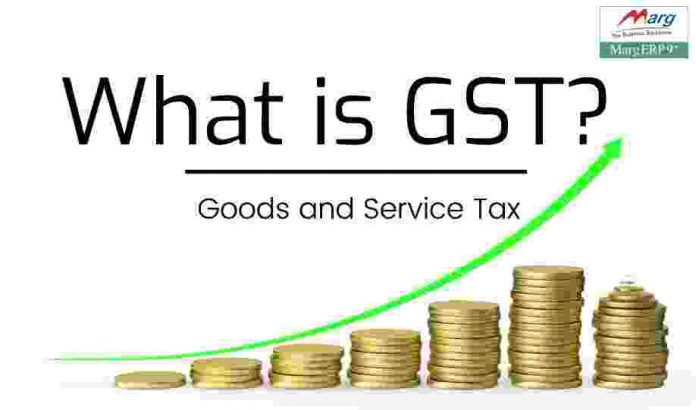Article Content:
- What is GST?
- Who needs to register for the GST?
- What is the difference between IGST, CGST, and SGST?
- Where can I read more about the different categories of GST?
- How should I set my taxes?
- How do I configure an HSN code in my products?
- Benefits of GST in India
- The advantages of GST
- Factors that should be taken into account the GST
- Technical aspects of the Indian GST model
What is GST?
Throughout India, Goods and Services Tax is an applicable indirect tax. It replaces other taxes and levies that are applied by central and state governments, including Value Added Tax (VAT), Central Sales Tax, Special Tax, and Consumption Tax, among others.
Check with your tax advisor to make sure your business is registered and that it complies with the GST.
Who needs to register for the GST?
Registration for the GST is mandatory if:
- Your sales volume in a fiscal year exceeds Rs 20 lakhs (Rs 10 lakhs for the northeast and mountainous states).
- Your business is registered under previous law, such as service tax or VAT.
- You make the interstate supply of goods.
- You sell in online markets.
It is not an exhaustive list. Confirm with your tax advisor to find out if you need to register.
What is the difference between IGST, CGST, and SGST?
For the interstate supply of goods or services, a single integrated tax – integrated GST (IGST) – must be paid to the central government. For sales within a state, you must pay the Central GST (CGST) to the central government and a State GST (SGST) to the government of your State.
You cannot create multiple tax items, but you can set your taxes to collect SGST and CGST for sales of products within the State.
Where can I read more about the different categories of GST?
To read more about the GST updates, visit the website of the Central Tax and Customs Board.
How should I set my taxes?
The GST tax rate varies depending on the type of product, so you cannot automatically set a specific rate. The CGST is initially set at 9%. The IGST is set at 18% instead of the federal tax for all states except Karnataka. For Karnataka, the SGST is set at an additional 9% federal tax.
- Set the federal tax rate at 14%.
- For all states, except Karnataka and Maharashtra, set the IGST rate at 28%.
- Set the rate of IGST in Karnataka at 28% instead of the federal tax.
- Sets the SGST rate in Maharashtra to an additional 14% of the federal tax.
You can create hidden collections for each tax category and assign your products to these collections to apply different rates to different types of products, and then modify the tax rates for each collection.
How do I configure an HSN code in my products?
You can use the HS rate code for products to store the HSN code. This field requires that the codes have at least six digits, so if you want to use shorter HSN codes, you must add HS codes such as Meta fields or product labels.
Benefits of GST in India
It promises to simplify the current tax structure by reducing the obstacles in the procedures, increasing the tax base, reducing tax evasion, and reducing the final cost of goods and services for the benefit of companies, Consumers, and the government.
According to various studies and the experience of countries such as Canada, Australia, and New Zealand, the implementation of a consumption tax based on the destination of products usually has positive results. The GST in these countries has not only managed to increase tax collection but has also shown benefits for long-term macroeconomic growth.
The advantages of GST are:
-
- Broader tax base, necessary to reduce tax rates and eliminate classification disputes.
- Elimination of the multitude of taxes and their cascading effects.
- Validation of the tax structure and simplification of compliance procedures.
- Harmonization of compliance procedures to reduce errors and increase efficiency.
The structure of GST would follow the ‘principle of destination,’ that is, imports will be subject to GST, while exports would be 0. In the case of interstate transactions within India, the state tax would be applied in the State of destination and not in that of origin.
Other advantages that GST can bring to traders in India
There are other advantages of implementing GST in India:
- Possible price reduction: due to a complete and transparent tax, manufacturers or merchants do not have to include taxes as part of the cost of production, which is a reasonable reason to say that there will be a price reduction.
- Increase in revenue from the government of India: The government of India wants to introduce the GST as a neutral income rate, in which case the revenues may not be significantly increased in the short term.
- Less cost in the procedure: Instead of keeping large records, returns, and reports under different criteria, all taxpayers will feel more comfortable under the GST, since the cost of compliance will be reduced.
Issues to consider for the successful implementation of the GST
For a successful GST implementation, care must be taken about some aspects.
The following are some of the factors that should be taken into account the GST:
- First of all, all states must implement the GST jointly and also with the same rates. Otherwise, it will be difficult for companies to comply with the provisions of the law. Also, the GST will be advantageous if the rates are the same, because in that case, taxes will not be a factor in investment location decisions, and people will be able to focus on profitability.
- For appropriate operation, the GST must establish a taxable event. The rules must be more refined and free from ambiguity.
- THE GST is a tax based on the destination, not on the origin. In such circumstances, it must be identifiable as to where the goods go. It will be difficult in the case of services since it is not easy to identify where a service is provided, so this should be treated appropriately.
- More awareness about the GST and its advantages and professionals have to take responsibility for assuming it.
Technical aspects of the Indian GST model
Dual taxation: The GST will have a dual collection as required by the principle of fiscal federalism in the Indian constitution. So it will have two components at the same time – One, a state or territory GST of the union (EGST / TUGST) that will be collected by the State or territory of the union (TU). Two, a central GST (CGST) that will be collected by the federal government (also known in India as the Centre).
Integrated goods and services tax (IGST): Interstate supplies between two states and imports are taxed with the IGST, collected by the federal government. The IGST is the aggregate of the CGST and the EGST; The EGST is the one corresponding to the State where supplies are consumed.
Supply tax – The GST will also levy on the “supply” of all goods and services. Although for now, the GST taxes on the manufacture, sale, or supply of goods and services. But the obligation to pay the CGST or the EGST will arise when the supply of a good or service is carried out. Depending on whether the transaction is “inter-state” or “intra-state” (between states or within the same State, respectively), different GST provisions are applied to help companies determine the place of supply of goods its products.
Tax according to the destination – The GST is based on the principle of excise taxes according to the final destination of the good, in contrast to the old tax principle according to the origin.
Exemptions: alcohol for human consumption has remained outside the GST. Petroleum products, such as crude oil, diesel, gasoline, jet turbine fuel, and natural gas will be included in the GST system but at a later date yet to be determined by the Council.
Supported tax credit mechanism (ITC): ITC is the backbone of the GST regime in India. The GST is a value-added tax in each phase of the supply chain. The individual who supplies the goods and services or an agent acting in place of a supplier can claim a credit (on the taxes borne in each phase of the supply chain) in the next phase of added value. Therefore, the final consumer will only support the GST of the last supplier in the supply chain.
The cross-use of the ITC is not allowed: that is, the credit of the supported CGST can only be deducted from the past CGST, while the supported EGST credit can only be deducted from the past EGST, except for cases of supply of goods to Interstate level.
Exports will receive the supply treatment with a zero percent tax bracket: Zero percent supplies refer to any taxable supply of goods and/or services, but for which the tax bracket is zero. The credit for the taxes borne on the supply of these goods and services can be used.
Goods and services tax network (GSTN) – It is a non-profit company whose shareholders are federal governments, the state government and the territories of the union, leading Indian financial institutions such as ICICI Bank, HDFC Bank, HDFC Ltd, LIC Housing Finance, the National Stock Exchange Strategic Investment Corporation Ltd and taxpayers. The role of the GSTN is to provide information technology support to ensure a smooth transition from the old tax system to the processes required under the GST.
Invoice correspondence system: The GST favors a continuous flow of ITC throughout the supply chain. One of the key features of the GST is the verification of ITC claims by taxpayers to prevent losses. To this end, the GSTN has developed an invoice correspondence system to match the purchase and sale invoices of taxpayers. Therefore, every taxable person under the GST has to issue an invoice, which is uploaded to the invoice correspondence system. After the purchase and sale invoices have been matched in the system, you can proceed with the ITC.
System for assessing compliance with the GST: It is a unique way to assess whether a taxable person in India has complied with the GST regulations. In this system, every taxable person will have a classification that will be based on their tax compliance records. This classification will be updated periodically and will be public domain information to ensure greater transparency.










































Great blog you just describe it very nicely